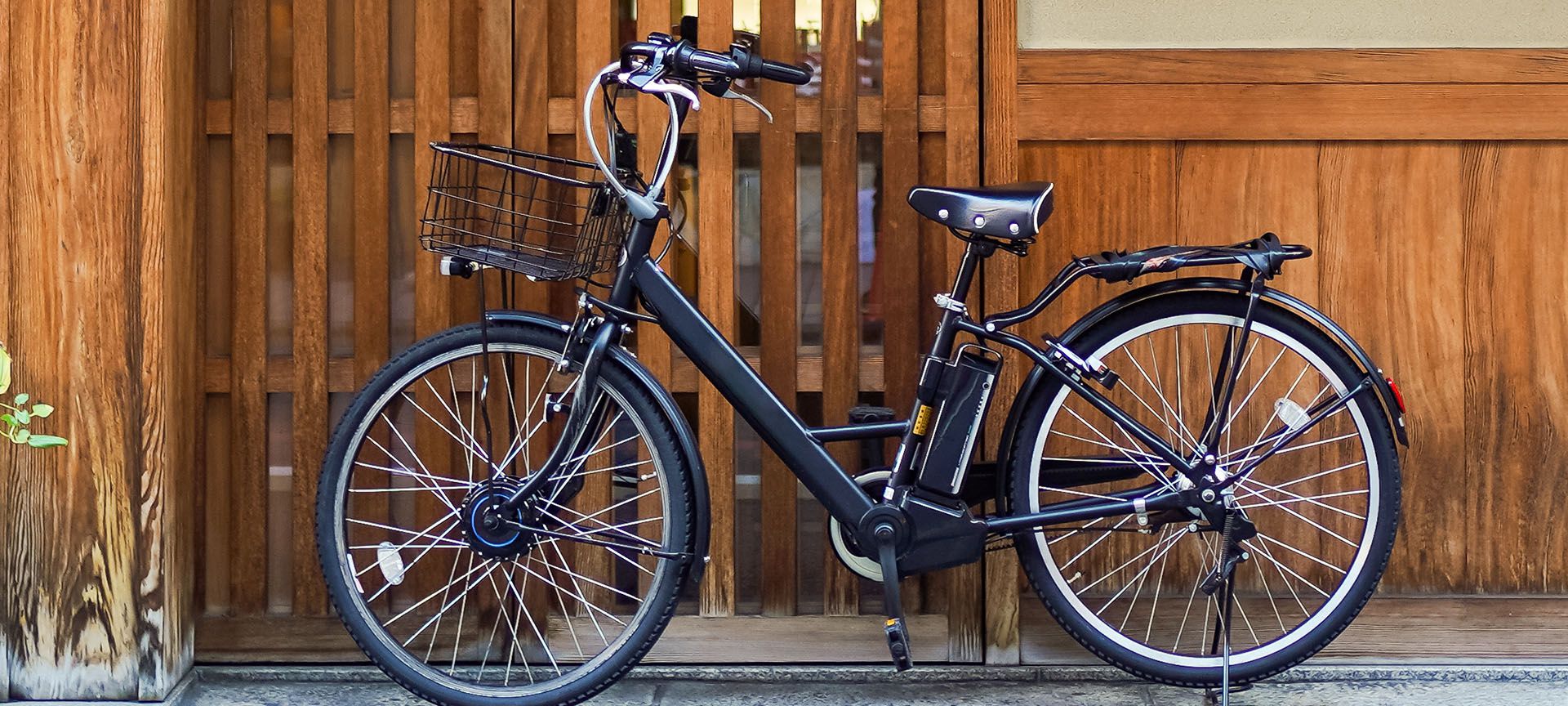When German inventor, Karl von Drais, developed the first bicycle in 1817, the machine was aptly called the “swiftwalker.” The bicycle has lived up to its early name and paved the way for even better designs.
The latest evolution of the bicycle is the electric bike. These bikes offer many advantages over standard push bikes.
How do e-bikes really differ from traditional bikes, and how does riding an e-bike stack up against riding traditional bikes? Here we’ll answer all those questions while looking at the pros and cons of each option. Let’s get started!
How an Electric Bike Differs from a Traditional Bike?
You are probably familiar with the traditional bicycle. It is a vehicle having two wheels attached to a frame, one in front of the other. You propel it by pushing down on two-foot pedals connected to the rear wheel by a chain, and you steer it by turning the handlebars connected to the front wheel.
On the other hand, an electric bike is simply a traditional bike that has an electric drive system added to give the rider some extra power. You ride an electric bike the same way you ride a traditional bike. However, you ride an electric bike with less effort because the electric drive system assists your pedaling.
The mechanical elements of electric bikes (frame, wheels, pedals, handlebars, etc.) are the same as in traditional bikes, and they function in the same way.
In fact, you can convert virtually any traditional bike to an electric bike by adding an electric drive system. The components of the electric drive system are an electric motor, battery, sensor, controls, and display.
Battery – It is the unit where the power that’ll be used to provide assistance for pedaling is stored.
Electric motor – It is the component that converts the electrical energy from the battery to motive power to assist your pedaling
Sensor – It tells the motor when to start providing extra power to assist your pedaling
Controls – The controls allow you to select the level of pedal assistance that the motor should provide
Display – It shows important information about the ride, such as battery level, speed, etc.

Advantages of a Traditional Bike
The bicycle is the most popular vehicle in the world because of the numerous benefits it offers. The advantages of traditional bikes include:
Cheap Form of Transportation
Not only is the traditional bike one of the cheapest vehicles to purchase but it is also one of the cheapest vehicles to use and maintain.
For example:
- You won’t have to worry about buying gas since bicycles are pedal-propelled
- With bicycles, you won’t have to pay for parking
- Bicycles do not require licenses or registrations
- Bicycle parts are relatively cheaper than parts for cars and motorbikes, so repairs are cheaper
Environmentally Friendly
Unlike other popular modes of transportation (such as cars and motorbikes), bicycles do not use fossil fuels and produce zero emissions.
Bicycles are eco-friendlier, making them the choice mode of transportation for people who are concerned about reducing their carbon footprint and saving the planet.
Quick, Easy Movement Within Cities
Cycling is better for quickly covering short distances that will be impractical to cover using cars. First, cycling is faster than walking. Secondly, you will not get stuck in traffic when cycling as you may do when driving.
With bicycles, you may travel down narrow in-roads that cars cannot enter. Thus, bicycles offer quick ways to move around in cities.
Keeps You Healthy
Cycling is an aerobic exercise that keeps you healthy. It gives your muscles and heart a good workout. It is good for cardiovascular health and strengthens your muscle, and is also one of the best aerobic exercises for burning calories.

Disadvantages of Traditional Bikes
Though traditional bikes have numerous advantages, they are not without disadvantages. The disadvantages of traditional bikes include:
Can Be Exhausting
Traditional bikes are propelled exclusively by pedaling. The process of cycling is energy-depleting and will leave you with tired legs.
Sweaty Commute
The physical effort of cycling is a lot of work and bicycle riders usually build up sweat in the process. When going out, you want to get to your destination feeling fresh. But with bicycles, you would get there in sweaty clothes and feel uncomfortable.
Not Suitable for Long Distances
Because cycling is exhausting, there is a limit to how far you can go on your bicycle. The average speed of a cyclist is 12 miles per hour. That’s not great if you need to get to a far-away destination as it will take a lot of time and effort.
Advantages of an Electric Bike
The electric bike was developed to overcome many of the disadvantages of the traditional bike. The advantages of electric bikes include:
Quick, Easy Movement Within Cites
Like the traditional bike, an electric bike helps you to cover short distances very quickly. You’ll be able to enter narrow walkways that cars cannot enter, and you won’t be delayed by traffic.
Environmentally Friendly
Electric bikes use electrical power from a battery. So, like traditional bikes, they do not use fossil fuels or give off harmful emissions. Electric bikes are eco-friendly modes of transportation for people concerned about reducing their carbon footprint.
Ride with Less Effort
An electric bike has a motor that delivers extra power to assist your pedaling. Therefore, you ride an electric bike in the same way you ride a traditional bike but with less effort. This means riding an electric bike is less exhausting. This also makes an e-bike excellent for older people or anyone with mobility issues.
Non-Sweaty Commutes
As we mentioned above, e-bikes assist your pedaling, meaning riding an e-bike requires less effort than riding a traditional bike. It also means that you won’t sweat as much when riding electric bikes. You’ll reach your destinations feeling fresh and clean, and not all-sweaty and uncomfortable.
Travel Faster
Since an electric bike provides extra power to assist your pedaling, it helps you to travel faster. With an e-bike, you can easily reach and sustain a speed of 15 – 20 miles per hour.
Some people may reach this speed when riding traditional bikes but it won’t be for long because sustaining such speed levels takes a lot of effort.
Travel Longer Distances
With a traditional bike, 20 – 30 miles will be a long and tiring ride but with an e-bike, you can easily go further.
Most electric bikes have a range of 20 – 35 miles, meaning the motor can power you that far when the battery is fully charged. If you cycle part of the journey without pedal assistance, you easily cover a longer distance.
Gives You Confidence to Climb Hills
An “uphill task” literally means something that requires a great deal of effort. Riding a bike uphill means going against gravity, so it is challenging for all cyclists. You need to pedal harder and faster for a boost of power to overcome gravity and climb up the slopes. This makes bicycles undesirable for most people on hilly terrain.
An electric bike gives you the confidence to tackle hills. When you need to climb up a hill, you simply use motor assistance and you will not have to overexert yourself.

Exercise
Most e-bikes are pedal-assist bikes. You will pedal an e-bike as you do a traditional bike and the motor assistance kicks in when you start pedaling. Therefore, e-bikes can also give a good workout, albeit not as good an exercise as when using traditional bikes.
Disadvantages of an Electric Bike
While the electric bike has many advantages over traditional bikes, these pedal assist bikes are not without their disadvantages. Some of the disadvantages of electric bikes are:
High Initial Purchase Cost
On average, basic traditional bikes cost $350 – $700. However, the typical standard electric bike costs around $1,200 – $1,500, with some costing as much as $10,000. Thus, an electric bike is more expensive than traditional bikes.
Heavier
An electric bike is a traditional bike plus some extra components which include a heavy battery so electric bikes are heavier than a traditional bike.
While the average traditional bike weighs 25 – 35 pounds, a typical e-bike weighs 40 – 70 pounds. You’ll feel the brunt of the extra weight if your battery dies and you have to pedal uphill without assistance, or if you live on the upper floors of an apartment and need to carry your bike down and up the stairs.
Needs Electricity
You need to charge your e-bikes at home, and that increases your electricity consumption. Also, if you take your e-bike on a long ride, you may deplete more than half of the battery life on the way to your destination, and will not have enough charge for the trip back home.
Due to this, you may need to charge your e-bike when you are out. Unfortunately, there are not many e-bike charging facilities but standard outlets can often be used.
Batteries May Need Replacing
Like every other battery, e-bike batteries become weaker over time. If you ride and charge every day, your battery will serve you only 2 – 3 years. Sadly, the battery is one of the most expensive components of an e-bike.
Have More Regulations
E-bikes are regulated more than traditional bikes. For example:
- E-bikes often come with speed limits which vary from region to region
- Regions often restrict where you can ride e-bikes. In some places, you can ride e-bikes anywhere you can ride a traditional bike. But some regions restrict e-bikes to specific lanes
- In some places, e-bike riders are required to wear helmets, while other places do not have laws regarding helmets
With an e-bike, you’ll need to pay more attention to laws in your city so that you do not end up breaking any and facing a penalty.

Final Thoughts
Riding a traditional bicycle is a quick and fun way to move around. The most recent evolution of the bicycle is the electric bicycle, which uses a battery-powered motor to assist pedaling.
The electric bike has many of the same advantages as the traditional bike. It is eco-friendly, an easy way to move around, and gives a good workout.
However, the pedal assistance of the electric bike tackles many of the disadvantages of the traditional bike as it helps you ride faster, travel longer distances, and go uphill with less effort.




















